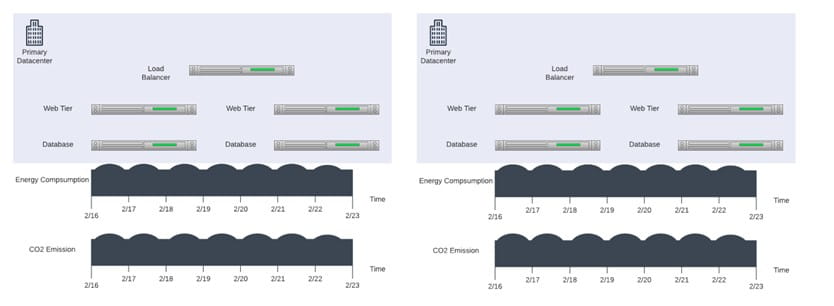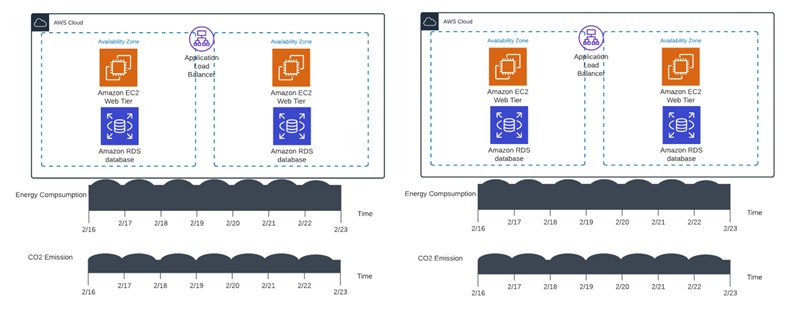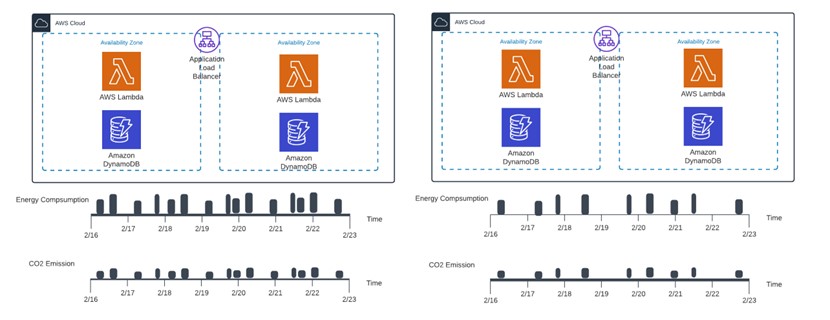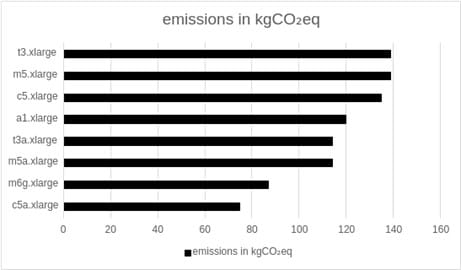Cloud Services and Environmental Sustainability – Part 4: A Three Step Process for Optimizing Your Carbon Footprint
- septembre 27, 2022
In my last 3 blog posts on this topic, I discussed how to develop an environmental sustainability plan for IT leveraging the cloud (Part 1), how to measure the environmental impact of your IT workloads (Part 2), and five steps to reduce their environmental impact (Part 3). In this final post of my series, I share a simple three step process for optimizing your IT carbon footprint.
Step 1: Estimate Your Current Footprint
The following is an example of a basic infrastructure design for running a web application with load balancers, a web tier and a database tier running on Virtual Machines. As CPU goes up, so does energy consumption and carbon emission.

Step 2: Lift and Shift to the Cloud
After a lift-and-shift to the cloud (as-is migration without optimization), the cloud resources will consume approximately the same amount of energy as on-premises resources. However, the carbon footprint will be 10 to 15% lower because of the cloud provider’s better PUE and GEF.

Step 3: Modernize the Workloads
Assuming an app is migrated to Amazon EKS or AWS Lambda and Amazon DynamoDB, as illustrated below, cloud resources only run when needed. When they aren’t running, they don’t consume energy. Note that energy consumption and CO2 emissions don’t look linear, but discrete. A 50% emission reduction – as indicated in this paper from 451 Research – can be achieved once the transformation is completed.

In addition, upgrading the application code SDK can make a significant difference. For example, migrating an app from an older .NET Framework to .NET 5 results in a smaller footprint.
Also, you can migrate to ARM-type processors, such as the AWS Graviton Processor, which consumes up to 60% less energy for the same performance when compared to other Amazon EC2 instances.
The following chart compares emissions of various instance types with similar specs (4 vCPU, 16 GB RAM) and running 24/7 for a full year in AWS us-east-1. The ARM-based AWS Graviton instances (m6g family) and AMD-based instances (m5a, c5a families) are more energy efficient than the Intel-based instance types.

When it comes to machine learning or HPC workloads, we typically have bursts of enormously powerful servers which generate a lot of CO2. These bursts can run non-stop for hours, days or sometime weeks! Machine learning adoption has accelerated significantly in the past few years so the emissions from these workloads are not negligible. This blog post from huggingface.co explains how machine learning models have been growing in complexity, always requiring more energy to build. Using smaller, pre-trained models can shorten the computation time and yield to the same outcome.
How Can NTT DATA Help Build and Achieve Your Sustainability Goals?
Often the enterprises running environmentally efficient workloads have already transformed and modernized their IT. They are the ones outperforming their competitors.
NTT DATA’s cloud practice can:
- Advise your organization on defining sustainability goals and implementation strategies,
- Migrate workloads to energy efficient cloud providers,
- Optimize cloud workloads to lower energy consumption, and
- Manage cloud workloads and provide continuous recommendations for improvements, including those related to the carbon footprint.
Head to our sustainability page to read case studies about NTT DATA projects that have contributed to society and made the world a better and safer place.
Subscribe to our blog

Empower Teams
As we move into 2022 and beyond, security leaders must empower their teams to have the flexibility and awareness to tackle challenges in this rapidly changing environment. CISOs can never take their eye off the technologies that dominate our field, but it’s just as essential to continue to nurture the people and processes to get the most out of those new technologies.



